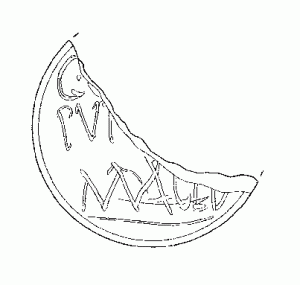By Richard Cuttler, Sam Hepburn, Chris Hewitson and Kristina Krawiec. iii+197 pages. Oxford: Archaeopress. (BAR Brit Ser 563) 2012. ISBN 9781407310015. ISBN 978140731001538.00.
The site of Delamere Street lies just outside the north gate of Roman and medieval Chester and in recent years has been subject to intensive investigation as part of the Gorse Stacks development. This publication represents the culmination of the investigations carried out by Birmingham Archaeology during 2006 and 2008.
The excavation produced evidence for another probable Roman legionary, G(aius)
V[al(erius] | Pud[ens] | Maceia (tribu), who inscribed his name on the base of an orange ware jar (from Holt?) before it was fired in the late first or early second century.
The nomen Valerius is frequent in Italy and southern Gaul and is typical of legionaries in the early empire, including Roman Inscriptions of Britain 1, 478?80, 539, 541 and 542 from Chester. The cognomen Pudens is also common, again including L(ucius) Valerius Pud[ens] from Chester (RIB 1, 542). (After R Tomlin, pages 65?6).
https://chesterarchaeolsoc.org.uk/wp-content/uploads/2017/01/CAS-logo-350x120.jpg00informaticscentrehttps://chesterarchaeolsoc.org.uk/wp-content/uploads/2017/01/CAS-logo-350x120.jpginformaticscentre2016-11-02 16:18:512021-01-06 10:39:17Gorse Stacks – 2000 Years of Quarrying and Waste Disposal in Chester
By Catherine Clarke. University of Wales Press 2011.
This ground-breaking volume brings together contributions from scholars across a range of disciplines (including literary studies, history, geography and archaeology) to investigate questions of space, place and identity in the medieval city. Using Chester as a case study ? with attention to its location on the border between England and Wales, its rich multilingual culture and surviving material fabric? the essays seek to recover the experience and understanding of the urban space by individuals and groups within the medieval city, and to offer new readings from the vantage point of twenty-first century disciplinary and theoretical perspectives.
Normal price £48; exclusive 20% discount for members (£38.40, plus £ p&p). Download an order form here.
For more on this project, see www.medievalchester.ac.uk.
https://chesterarchaeolsoc.org.uk/wp-content/uploads/2017/01/CAS-logo-350x120.jpg00informaticscentrehttps://chesterarchaeolsoc.org.uk/wp-content/uploads/2017/01/CAS-logo-350x120.jpginformaticscentre2016-11-02 16:15:542019-09-17 10:05:10Mapping the Medieval City: Space, Place and Identity in Chester c 1200 – 1600
Gorse Stacks – 2000 Years of Quarrying and Waste Disposal in Chester
/in Archive, Publications /by informaticscentreBy Richard Cuttler, Sam Hepburn, Chris Hewitson and Kristina Krawiec. iii+197 pages. Oxford: Archaeopress. (BAR Brit Ser 563) 2012. ISBN 9781407310015. ISBN 978140731001538.00.
The site of Delamere Street lies just outside the north gate of Roman and medieval Chester and in recent years has been subject to intensive investigation as part of the Gorse Stacks development. This publication represents the culmination of the investigations carried out by Birmingham Archaeology during 2006 and 2008.
The excavation produced evidence for another probable Roman legionary, G(aius)
V[al(erius] | Pud[ens] | Maceia (tribu), who inscribed his name on the base of an orange ware jar (from Holt?) before it was fired in the late first or early second century.
The nomen Valerius is frequent in Italy and southern Gaul and is typical of legionaries in the early empire, including Roman Inscriptions of Britain 1, 478?80, 539, 541 and 542 from Chester. The cognomen Pudens is also common, again including L(ucius) Valerius Pud[ens] from Chester (RIB 1, 542). (After R Tomlin, pages 65?6).
Mapping the Medieval City: Space, Place and Identity in Chester c 1200 – 1600
/in Archive, Publications /by informaticscentreBy Catherine Clarke. University of Wales Press 2011.
This ground-breaking volume brings together contributions from scholars across a range of disciplines (including literary studies, history, geography and archaeology) to investigate questions of space, place and identity in the medieval city. Using Chester as a case study ? with attention to its location on the border between England and Wales, its rich multilingual culture and surviving material fabric? the essays seek to recover the experience and understanding of the urban space by individuals and groups within the medieval city, and to offer new readings from the vantage point of twenty-first century disciplinary and theoretical perspectives.
Normal price £48; exclusive 20% discount for members (£38.40, plus £ p&p). Download an order form here.
For more on this project, see www.medievalchester.ac.uk.